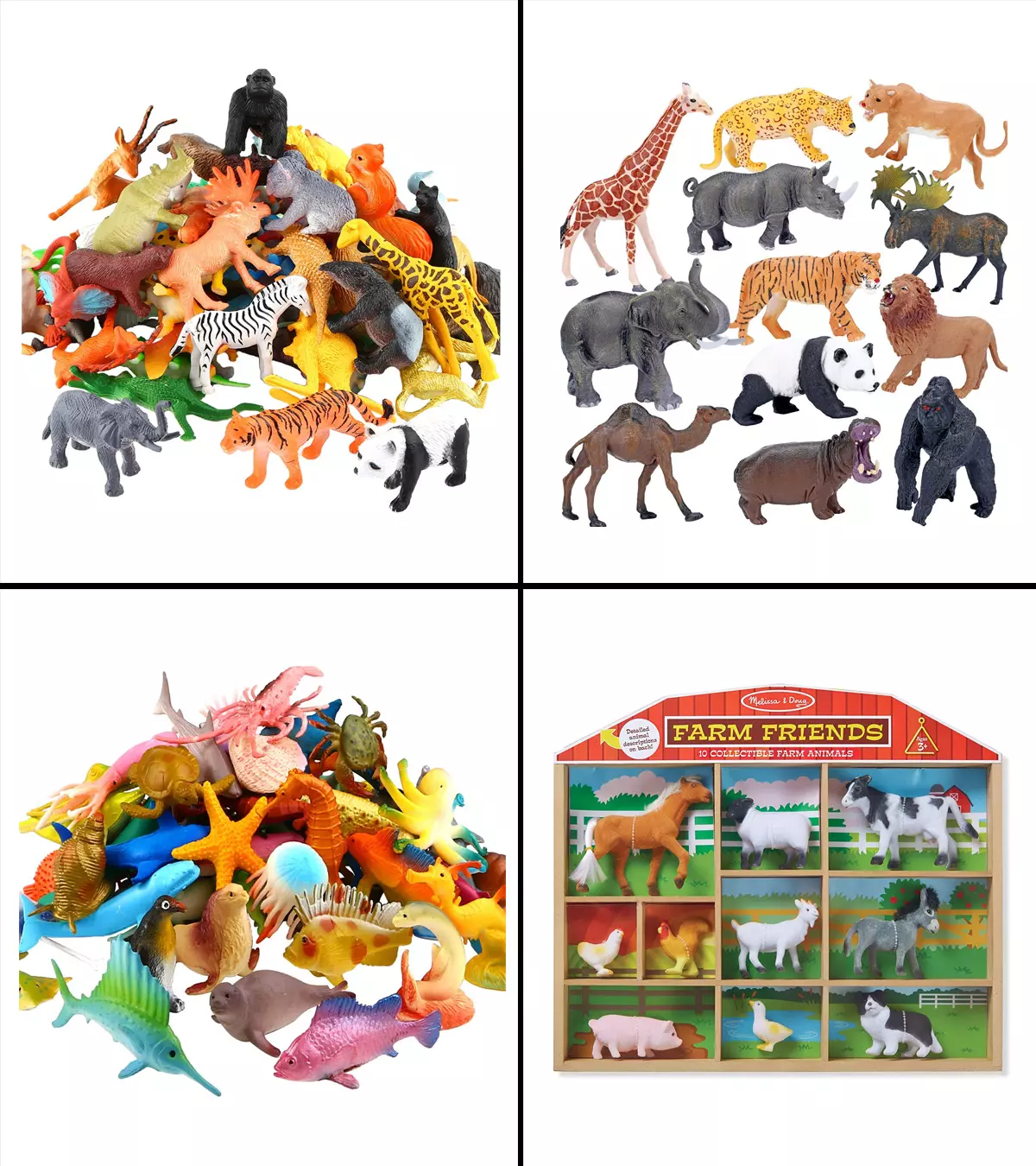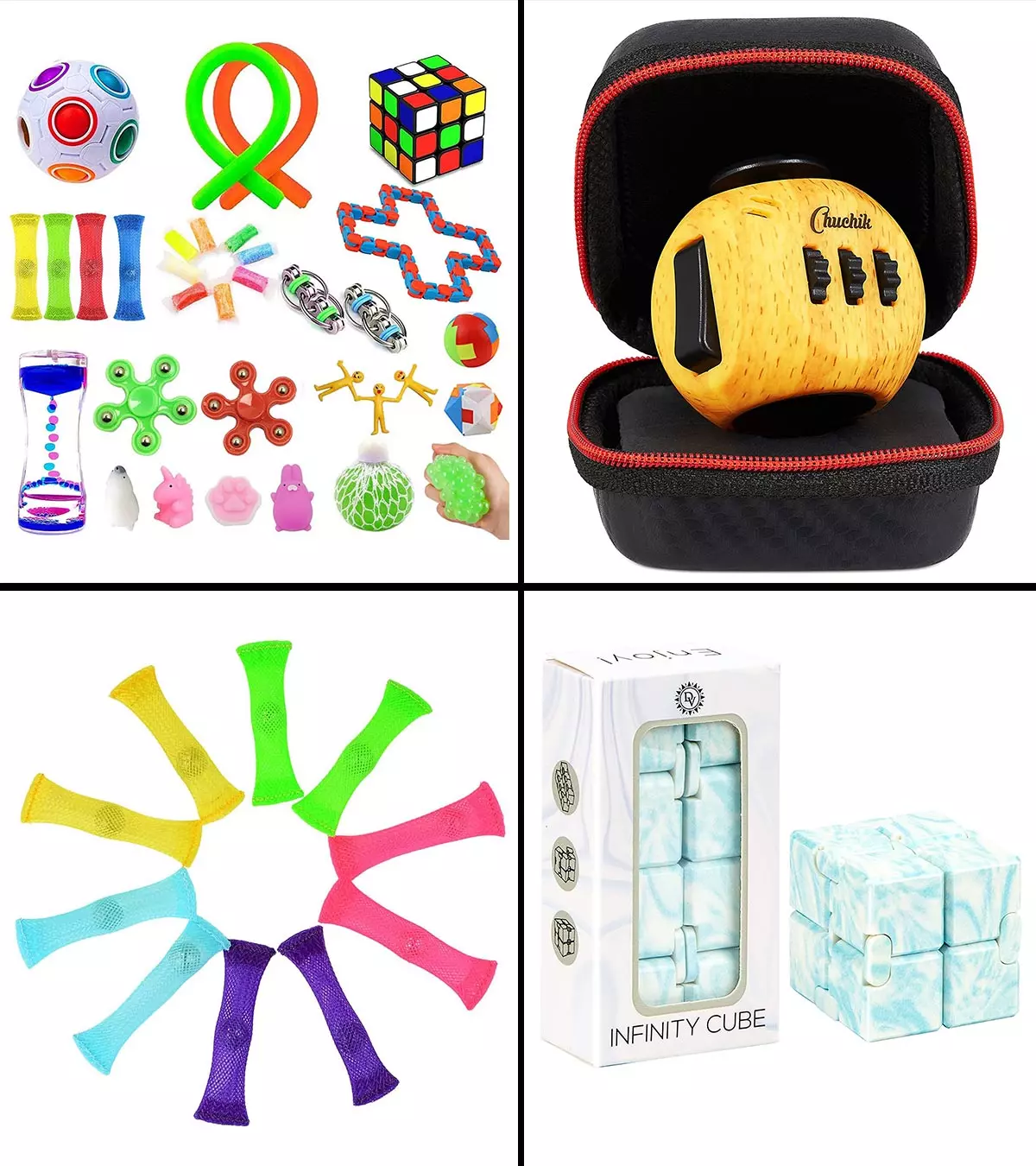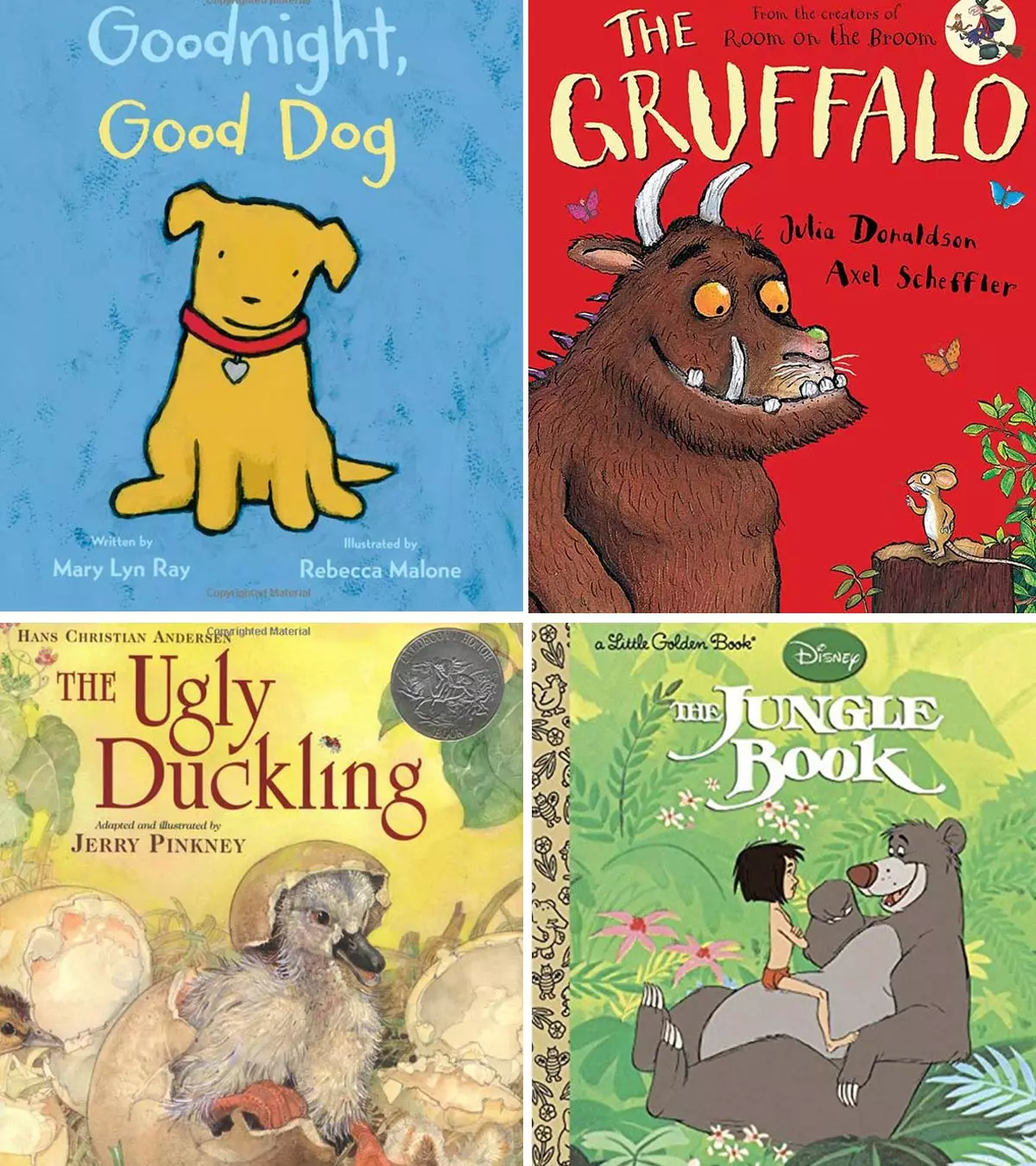
Image: MomJunction Design Team
Keep your child engaged for hours with our list of the best storybooks for kids. If your child often complains about being bored or is attached to their phones or tabs all day, an interesting storybook can be a good way to keep them entertained. These stories offer moral values and other good lessons that your child can learn from. Reading is a nurturing habit that will help your child develop intellectually and emotionally. It helps them develop literary proficiency and promotes imagination and storytelling.
However, make sure the books are age-appropriate and not too complicated so that your child doesn’t lose interest quickly. With multiple tried-and-tested options available, choose a book that suits your child’s interests. So, take a look at the best-selling options below and choose accordingly.
Top Picks
30 Best Children’s Books To Read With Your Kids
1. Best Illustrated Picture Book: The Very Hungry Caterpillar

A newborn caterpillar is very hungry, and he eats cupcakes, lollipops and everything else, which gives him a stomach ache. He’s even snacking on the pages of the book too- leaving holes for kids to put in.
He is getting fatter and bigger and one day he is metamorphosed into a beautiful butterfly with wings of purple, green, yellow, cherry pie and orange colors.
The author introduces the concept of metamorphosis in a way kids can understand. It is a picture book with mesmerizing illustrations and bright, colorful collages which the kids will love. This review video showcasing a tester’s experience can tell you more about this book.
Age: 2+
Author: Eric Carle
 Trivia
Trivia2. Best For Lessons On Friendship: Charlotte’s Web
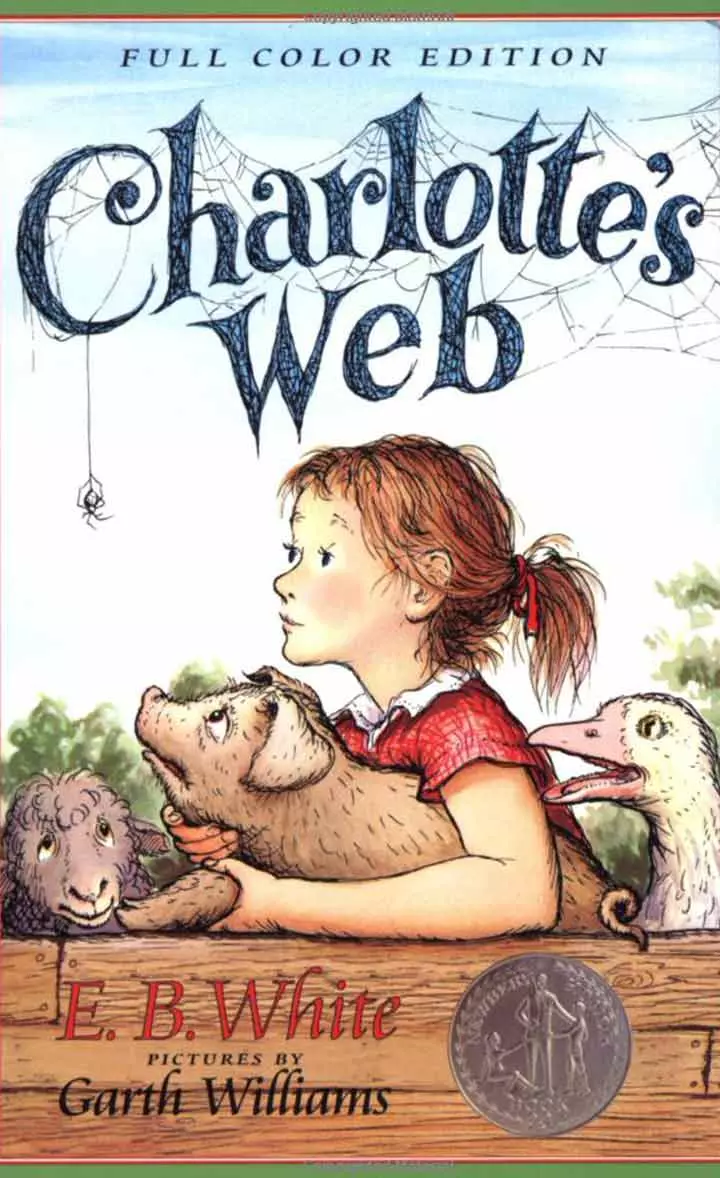
A little girl named Fern saves a pig by convincing her father not to kill him. The two become friends and Fren names him Wilbur. Wilbur is then moved to live in Fern’s uncle Zuckerman’s barn, and Fern visits Wilbur every day.
The days she doesn’t come Wilbur feels very lonely, as the other barn animals – the goats, sheep and also the rats do not want to make friends with him.
One day Wilbur finally finds a friend, a spider called Charlotte whose web is in one corner of the barn door. Soon, they learn that Wilbur will be killed for the next Christmas dinner.
But Charlotte hatches a plan which will make the Zuckermans want to have Wilbur with them forever.
This fiction book shares a story of friendship, love, and how we all should treat our friends. It’s timeless. You may watch this video to get more insight into the story.
Age: 5+
Author: E.B White
3. Best Children’s Rhyming Story: The Cat In The Hat

On a rainy day, two kids get bored as they have nothing to do sitting at home. Then, ‘The Cat in the Hat’ walks in and wreaks havoc. He’s stylish but shameless and troubles everyone with his misbehavior. He juggles others’ things and even invites his friends to litter the place more.
But, the boy finally takes a stand and orders the feline to “pack up” and leave. That is when the cat is in remorse; his whiskers and bow tie droop. Here is the video review of the book by a little bookworm.
Kids will especially love the words that rhyme so well in the well-crafted story of this best-selling book.
Age: 4+
Author: Dr. Seuss
 Did you know?
Did you know?4. Best For Bedtime Reading: Goodnight, Good Dog

It’s the story of a dog, who is not ready to sleep at night yet. But he understands night time as he sees the night lamp and hears the hum of the refrigerator. But he’s thinking about his playing in the fields and the things he heard in the day and all his interactions.
He takes a slow walk through the house and the soothing signs of night and sleep finally lull him, and he sleeps looking forward to the next day.
The interactive book beautifully portrays how a little kid refuses to sleep at night and wants to postpone it as much as possible. Also, it is available in hardcover, board book, and Kindle versions.
Age: 4+
Author: Mary Lyn Ray
 Did you know?
Did you know?5. Best For Learning Important Values: Charlie And The Chocolate Factory

Charlie Bucket, a good, kind and honest kid, is very poor and was starving to death when he wins a lottery to visit the mysterious chocolate factory of Willy Wonka, along with a lifetime supply of candies.
Only five children have won the tickets, but the other four kids are not as good as Charlie, and inside the factory, they get their comeuppance.
Augustus Gloop is a greedy boy who falls in the chocolate river; Violet Beauregarde is a chewing gum addict and is blown up into a giant blueberry when she tries to grab a stick of chewing gum. Veruca Salt is named a “bad nut” by Willy Wonka’s working squirrels and is thrown in the garbage. And Mike Teavee, a television addict, receives his deserved punishment.
It’s laughable when the kids behave terribly and when they receive punishment. Only Charlie, our hero and the good boy, is waiting to get the most beautiful surprise of his life.
The best-selling book explains the negative things through a subtle and sweet storyline so that the kids can relate to it.
Age: 6+
Author: Roald Dahl
6. Best For Learning About Animals: The Gruffalo
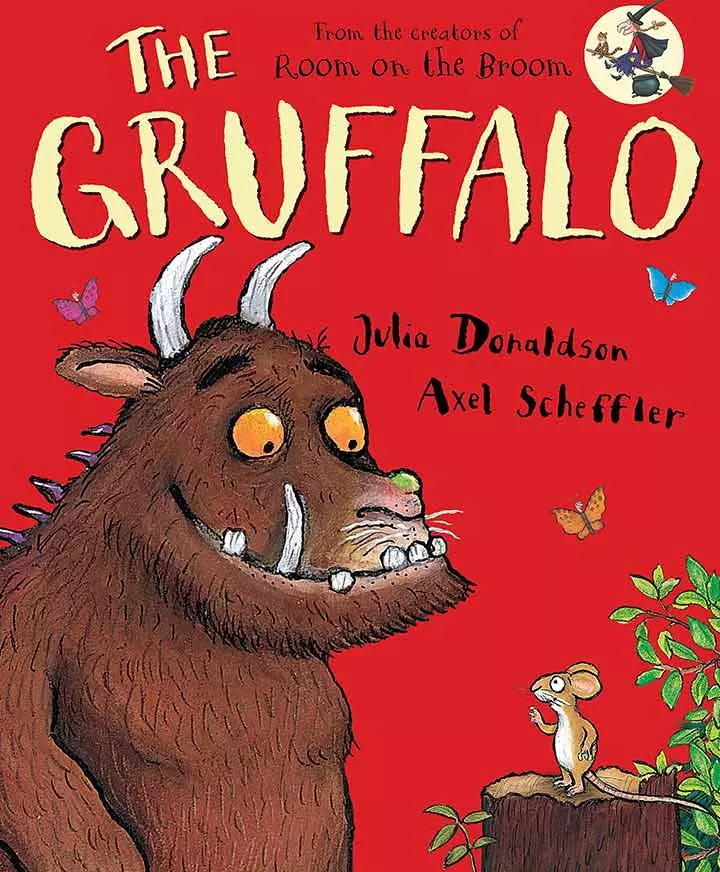
The Gruffalo is a rhyming story about a mouse and a monster he crafts out of his imagination. The mouse goes for a walk in a dangerous forest full of predators who are about to kill him.
But, the mouse is composed and smart and makes up stories of a fierce monster, Gruffalo, whom he is going to meet. The little mouse successfully escapes from a snake, an owl, and a fox. But, he ends up meeting the real Gruffalo he’s talking about.
But parents, don’t worry- as the Gruffalo turns out to be silly and your kids will want to read more and more.
The book has beautiful illustrations of the playful animals and the forest.
Age: 3+
Author: Julia Donaldson
7. Best For Learning Self-Confidence: The Ugly Duckling

The Ugly Duckling is a classic time-tested story of transformation that no one sees coming but is inevitable to happen. A tiny duckling is born and looks ugly. He is ostracized by the other ducks and geese.
He tries to look for new shelters and gets them too, but he never finds peace.
One day, to his and others’ surprise, he transforms into a beautiful swan and joins a flock of swans swimming in the lake.
It teaches a necessary life lesson to children that looks are not everything and can also help improve their literary proficiency.
Age: 6+
Author: Hans Christian Andersen
8. Best For Learning About Simplicity: The Story Of Ferdinand

A young bull, Ferdinand, does not butt his head with the young bulls and instead prefers to sit under a cork tree smelling flowers. He grows up to be a large and robust bull.
The men from Madrid come to the pasture one day to pick up one for a bullfight. Ferdinand accidentally sits on a bumblebee and gets stung and runs ferociously. The men rename him “Ferdinand the Fierce” as they think he’s mad and ferocious, and he’s taken away to Madrid.
All the ladies of Madrid come to see him fight, but Ferdinand is mesmerized by the flowers on the ladies’ head and lies down. Everyone is upset, except him. And he’s returned to his pasture where he peacefully smells flowers.
The story talks about the subtleness in life, however big we might become.
Age: 3+
Author: Munro Leaf
9. Best For Encouraging Curiosity: Green Eggs And Ham
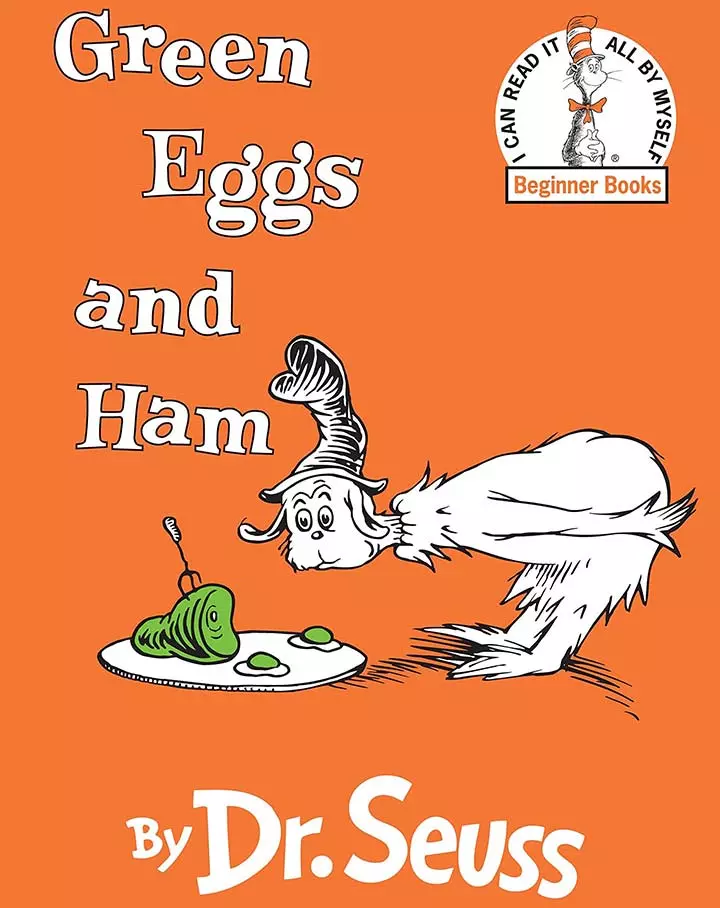
A character called “Sam-I-am” annoys an anonymous character to eat a plate of green eggs and ham. But the character won’t eat, no matter what! He keeps saying, “I do not like green eggs and ham. I do not like them, Sam-I-am.”
But Sam-I-am keeps following him, and the unnamed character keeps refusing. Sam-I-am pesters him at eight different locations — inside a house, car, box, boat et al., when finally the character gives in, eats them and surprisingly loves them; he says, “I do so like green eggs and ham.”
This best-selling book is perfect for your kids to interest them in trying new or exotic things that they think they don’t like.
Age: 4+
Author: Dr. Seuss
10. Best For Learning About Obedience: The Story About Ping
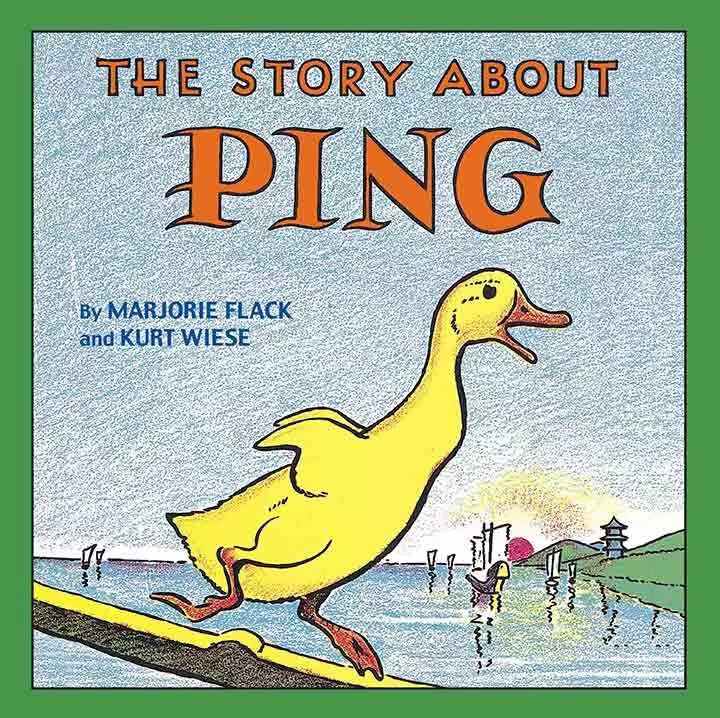
Ping was a little duck who lived on a beautiful riverboat on the Yangtze River. He loved his large family and his master. The last duck in line to board the riverboat at night was considered irresponsible, and Ping didn’t want to be one, because that duck would get a loud whack.
When Ping figured out that he’s going to be the last in line tonight, what did he do? He sets out on his adventurous journey on the Yangtze and finds a fascinating world of life, down the river to encounter not-so pleasing experiences.
It is an excellent book to teach children the importance of a family, friends, and obedience.
Age: 5+
Author: Marjorie Flack
11. Best For Loving The Family: The Jungle Book
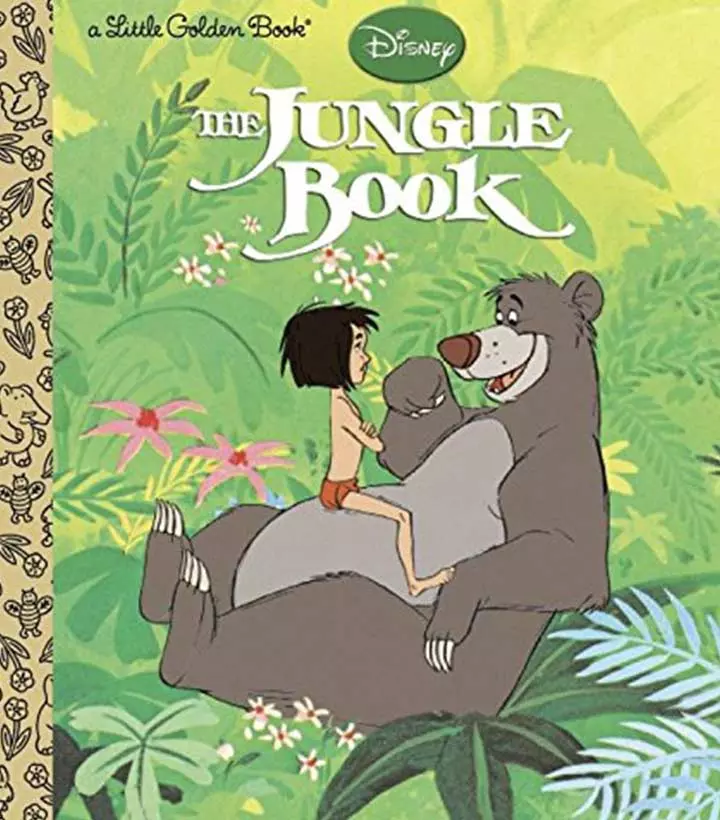
This is a classic comprising short stories. It revolves around Mowgli, who is a man-cub, lost from his human parents and raised by a family of wolves who protect him with all their might, although many animals see him as a human, and therefore a threat. Mowgli is none of the sorts and loves his Jungle family.
There are animal characters, all personified, Baloo the Bear, Bagheera, the panther, and the most significant threat for all, Shere Khan, the tiger, who is always lurking around, waiting to hunt and kill.
The book is all about loving the family and being faithful to them, which will make your child’s sleepy time more gentle.
Age: 8+
Author: Rudyard Kipling
12. Best For Taking Challenges: Winnie The Pooh
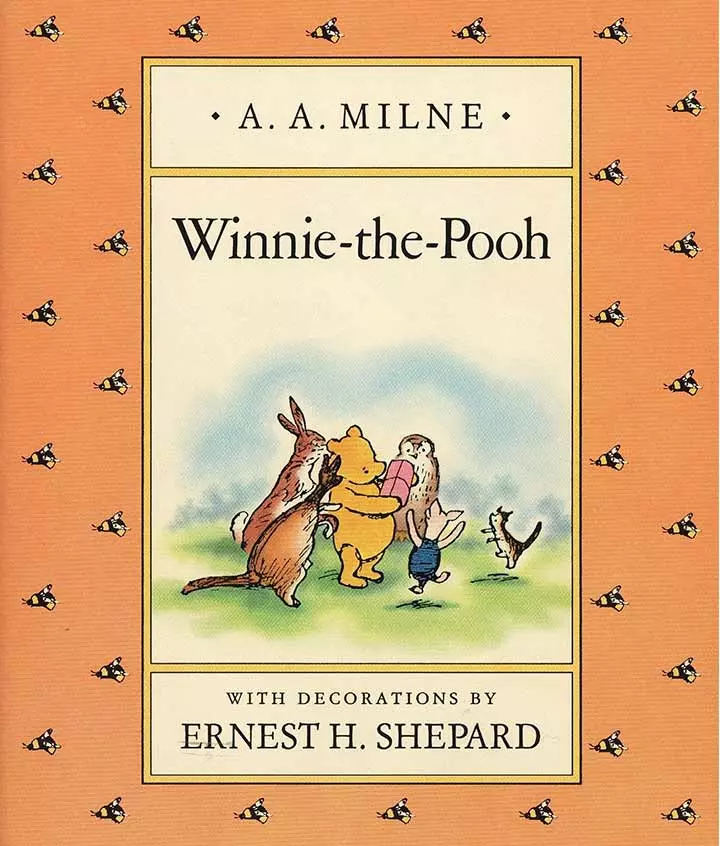
Winnie the Pooh is a good bear, who loves honey and lives in the forestland of Hundred Acre Wood. His friends are a tiger Tigger, a sad gray donkey Eeyore, a fearful pig Piglet, a pompous bird Owl, and a restless Rabbit.
Pooh is a sweet bear with little brain and he’s always in trouble. But the storybook reveals how kind and brave he is when it comes to his friends — he restores the missing tail of Eeyore and sets off on an adventure with Christopher Robin to save Piglet who’s lost in the floods.
The book inspires children to take up challenges and be there for their friends.
Age: 4+
Author: A.A Milne
13. Best For Children’S Curiosity: The Snowy Day
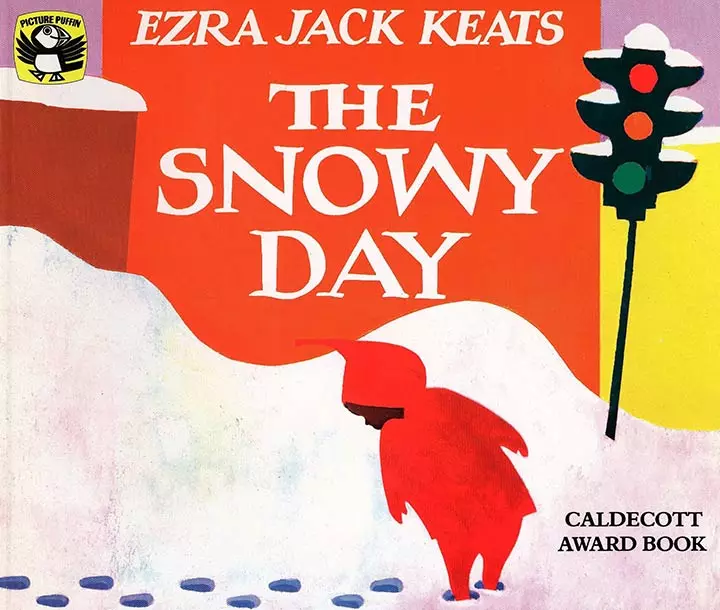
A poor young boy wakes up one morning to a world laid with freshly fallen snow, and he goes exploring.
This book captures the beauty of children’s curiosity about a new world and their evergreen optimism.
For children, possibilities are endless, and those are beautifully captured in the book’s illustrations.
Age: 2+
Author: Ezra Jack Keats
14. Best For Simple Living: When I Was Young In The Mountains

This book tells the amazing story of Cynthia’s childhood memories in the Appalachian Mountains where she lived with her grandparents. She talks of her grandfather who was a coal miner and came home all covered in dust, except for his lips.
With those lips, he kissed her forehead every day. She describes her anecdotes of getting tummy aches from overeating fried okra and her trips to the outdoor toilet in the night. She would swim in the swimming hole where sometimes she would encounter snakes. She tells how she pumped water from the wells and carried it back to the house for a bath.
If you, as a parent, grew up in the mountains or want to teach the abundant joy of simple living, here’s a perfect book for your kid.
Age: 4+
Author: Cynthia Rylant
15. Best Value Of Sharing: The Rainbow Fish
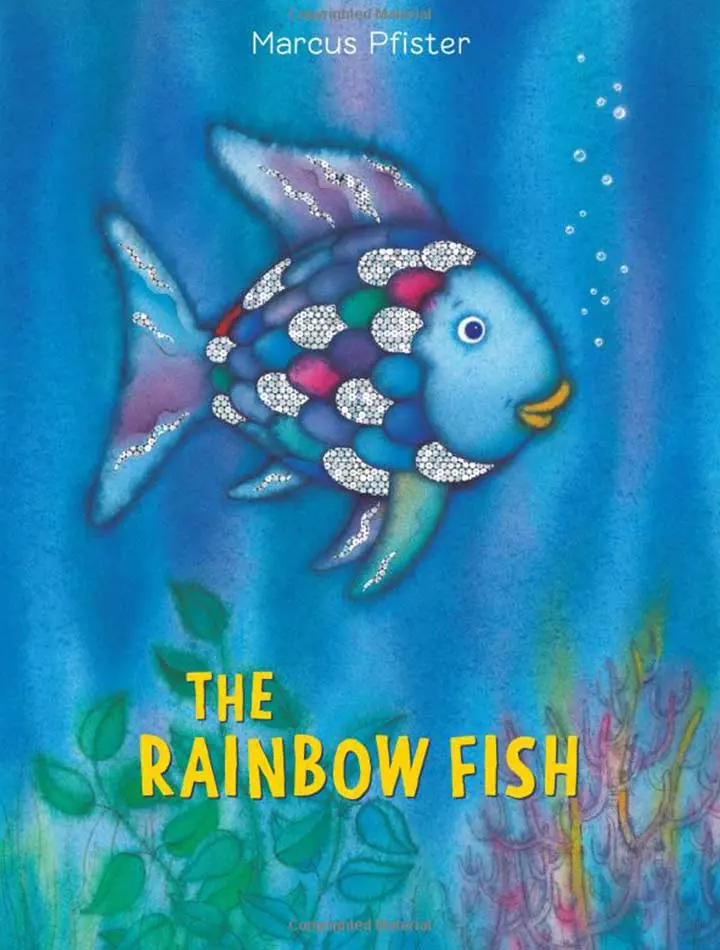
Rainbow Fish is a shiny fish with beautiful scales of multiple colors. One day a small fish asks him if he can have one of his silver scales, but he refuses rudely; this makes the small fish upset, and he doesn’t want to play with Rainbow again.
Now his only friend is the Starfish who tells him to go to the wise Octopus for some advice. The Octopus surprisingly knew he’d be coming, as the waves told her his story.
The Octopus advises him to share his beauty- the scales with each of his close friends. She tells him that he may no longer be the most beautiful fish, but he will discover how happy he would be.
Soon other fish ask him for scales, and he gives them all one each. The rainbow fish is now left with just one scale, but happier than ever.
This is a wonderful story to teach the value of sharing to children.
Age: 3+
Author: Marcus Pfister
16. Best Imaginary Adventure: The BFG

One night a little girl called Sophie, who lives in an orphanage, couldn’t sleep and looked out of her window. She sees a giant walking down and blowing something into the windows of every house. As he sees Sophie, he grabs and takes her away to his desert cave.
The giant explains that he was blowing dreams through those windows to enter the minds of kids. But the other giants who live in the desert are ferocious and bigger, and they want to eat children.
Now that they are friends, Sophie hatches a safety plan to rescue the children from being eaten, as the giants are headed to England. Her planning involves dreams, the BFG (Big Friendly Giant), and the Queen of England to stop the nightmare forever.
This lovely story takes children on an imaginary adventure.
Age: 6+
Author: Roald Dahl
17. Best Mesmerizing Rhymes: We’re Going On A Bear Hunt
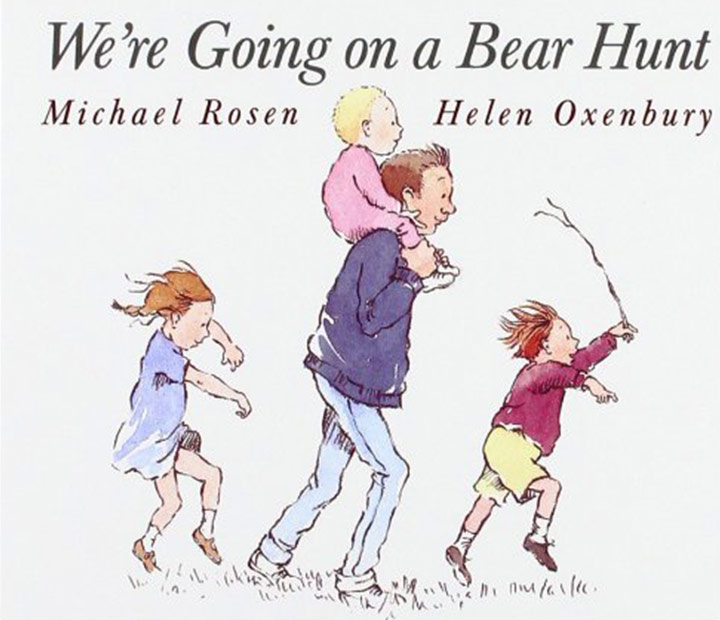
Five kids along with their dog set out for a bear hunt. As they keep going, they face new obstacles: first the long, flowy grass, then a broad river, a mud land, a thick forest, and a terrific snowstorm before they enter a cave: the cave of the bear.
They all get panicked, and run home, again through all the obstacles while the bear follows them. They reach home, lock the door to the bear and hide under the duvet.
They say, “We’re not going on a bear hunt again.”
Celebrating 25 years of love, this book has left an everlasting mark on children with its illustrations and mesmerizing rhymes.
Age: 2+
Author: Michael Rosen
18. Best For Skill-Building: The Gingerbread Man
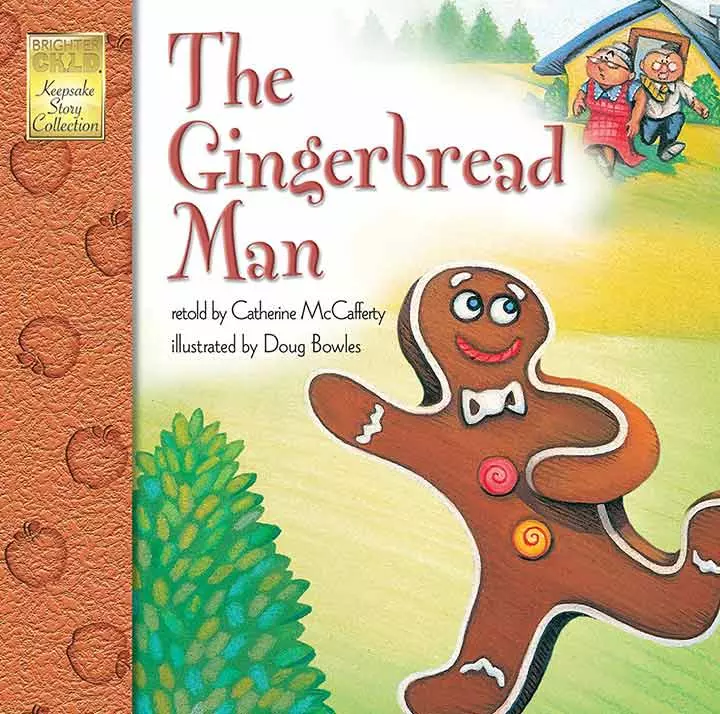
The American fairy tale speaks of a little old woman, who bakes gingerbread for her family. But just as her gingerbreads are baked, she opens the oven to take them out, and one of them runs away.
This gingerbread man is then chased by the little old man, followed by a cow, a pig, a horse and at last, finds himself in front of a river. The Gingerbread man cannot swim the river, as he will melt.
A sly fox tells him to jump over his tail, and he’ll help him cross the river. He foolishly does as the fox says. In the end, the fox eats the gingerbread.
This wonderful story teaches about the price one pays when someone acts without thinking. This tale now comes out in a happy, lovable version with a funny twist.
Age: 3+
Author: Catherine McCafferty
19. Best Innocent Tale: The Velveteen Rabbit

A stuffed toy rabbit, sewn from velveteen, is gifted to a little boy as a Christmas present. The boy plays with the other toys that are modern and forgets the velveteen rabbit. All the other toys snub the old-fashioned rabbit, but the wisest toy in the nursery, the Skin Horse, tells him that when given a lot of love from children, a toy magically gets transformed into a real one.
One day the boy loses one of his toys and sleeps with the rabbit. They become close again, and the rabbit is happy. But one day the boy gets scarlet fever, and the doctor advises to disinfect his room. He is taken away to the seaside, while his toys and books are going to be burnt.
The rabbit is put into a sack and left in the garden. As he sadly thinks of his life and the boy’s, a drop of tear falls on the ground. From the teardrop, emerges a flower and the flower turns into a fairy. She calls herself the Nursery Magic Fairy and tells the rabbit that he has become real as the little boy truly loves him.
She takes him away to the forest, and he’s turned into a real rabbit. On the next spring, the rabbit peeps to take a look at the boy, and the boy sees him too. The boy thinks of a resemblance between the rabbit and his velveteen rabbit, and smiles.
It is an innocent tale about the bond between a little boy and his toy.
Age: 4+
Author: Margery Williams
20. Best Moral Story: The Tortoise And The Hare
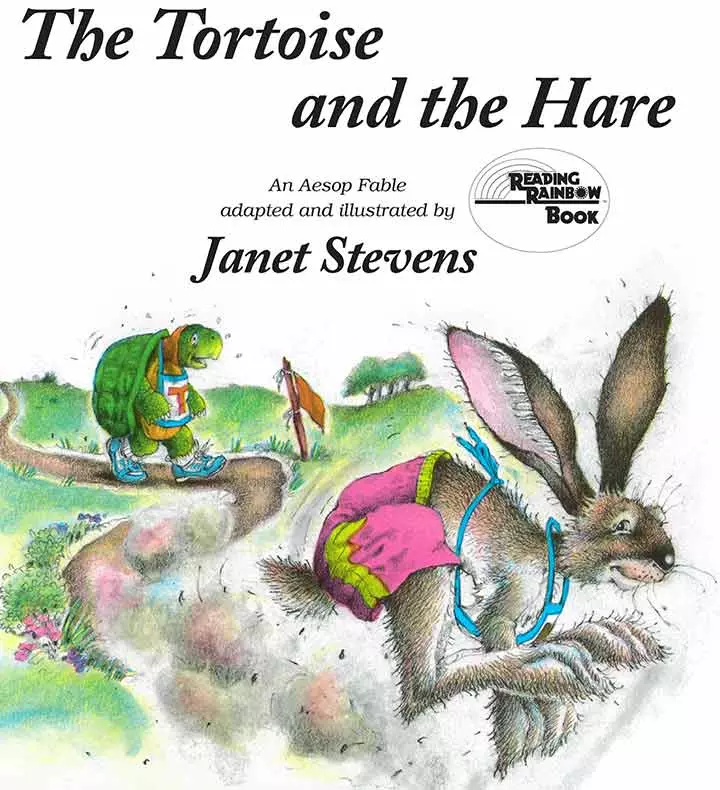
This Aesop’s fable is an all-time favorite of kids, and a cherished moral tale. This is a tale about a hare who taunts a slow tortoise all the time. One day, he challenges the tortoise into a race, and the hare laughs at the idea.
As the race begins, the tortoise moves forward slowly, while the hare runs fast ahead. Seeing his opponent coming slowly, the hare settles for a small nap. What happens when he wakes up? He wakes up to find his opponent crossing the winning race line slowly, but steadily.
The story explains the importance of stability over speed.
Age: 3+
Author: Janet Stevens
21. Best Unabridged: Just So Stories
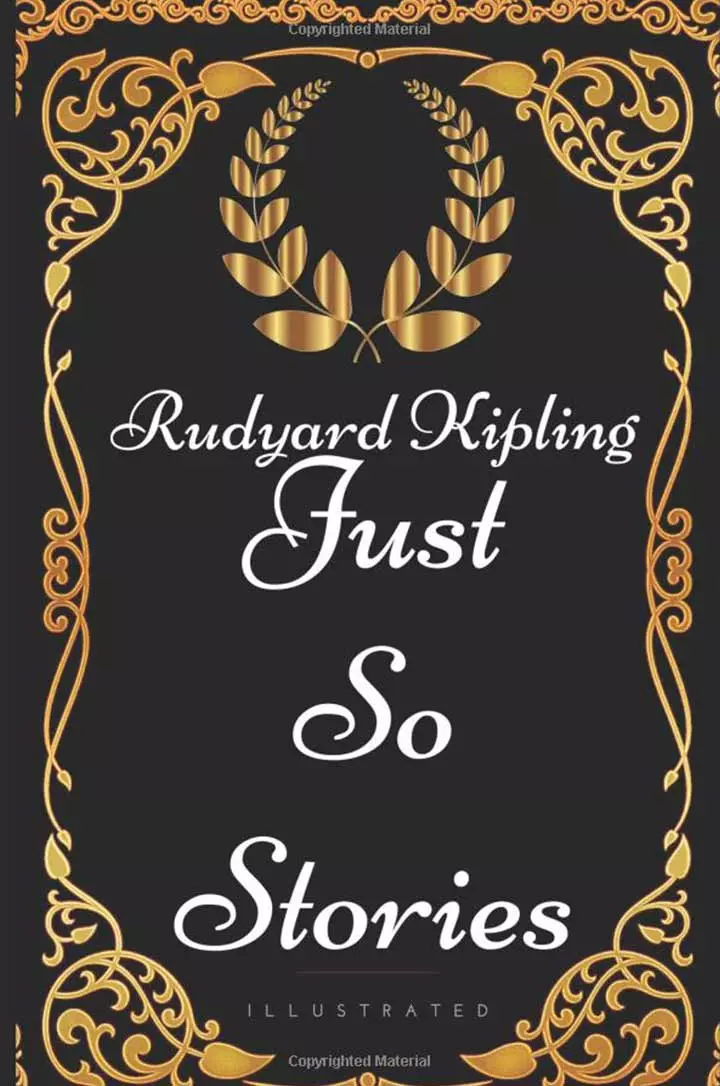
Rudyard Kipling used to tell these bedtime stories to his daughter “just so,” or she would complain every night.
In this series of stories, it shows how any animal got its particular traits; such as, the Whale has a throat that’s tiny because he swallowed a mariner. The camel got a hump because a djinn punished him for his refusal to work longer. An Ethiopian painted himself black, so he painted a leopard’s spots too.
These charming and fascinating stories for kids showcase the author’s literary expertise, making this classic a must-read.
Age: 6+
Author: Rudyard Kipling
22. Best Interactive Tale: Where The Wild Things Are
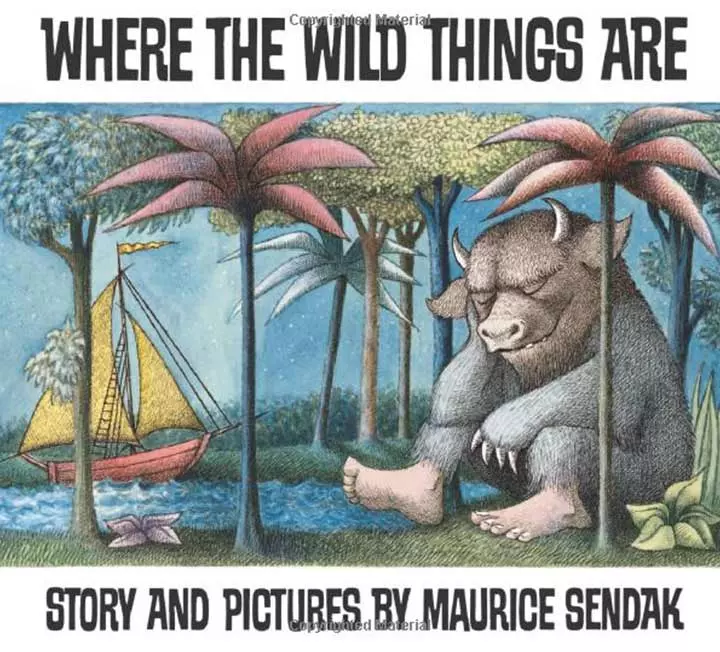
Max is a wild and naughty child who is sent to bed without his dinner because he threatened to eat up his mother. He thought he’d show everyone how able he is when it comes to swallowing up mom.
In his mind, a forest starts growing, and he boards a ship which takes him far across oceans to the home where the wild things are. They snarl at him with their claws and roll their eyes to eat up Max. Does it make our Max afraid? No, never!
Max befriends the monsters, and they announce him as the wildest of them all. Soon, Max is bored of all the fun and his adventure; he sails back home. When he returns what does he find? His supper in his room served hot by mom.
Shouldn’t kids be reminded of their mom’s importance occasionally? They should be through such stories in this interactive book.
Age: 2+
Author: Maurice Sendak
23. Best For Child Imagination: Blueberries For Sal

Sal, a little girl, is taken to the Blueberry Hill by her mother to pick blueberries. A cub and his mother bear have also come to eat berries before the winter starts.
While Little Sal is told by her mother to collect as many berries as she can to store up for the winter, Mrs. Bear teaches the cub to eat as many as possible to store up far during winter. The family pictures differ but are substantially similar when both the bear cub and little Sal get lost and exchange their mothers.
Both the mothers realize after some minutes that their kids have gotten mixed up. In the end, they are united with their right mothers and set back home.
The story unleashes the child’s imagination.
Age: 4+
Author: Robert McCloskey
24. Best Learning About Trees: The Giving Tree

The book tells the tale of an apple tree who loves a boy. She keeps giving her everything he ever needed or demanded, and the boy takes them all, be it her branches for playing, her trunk for climbing or her apples for eating.
When he grows up, he visits less and demands materialistic things – money from the apples, a house from her branches and a boat from her wood. The tree gives them happily while the boy seeks more and more, until one day nothing is left of the tree but the stump. That too the man uses as a stool to sit upon. Even then, she is happy.
The story talks of the benefits we get from trees and the man’s unending greed in the form of its beautiful illustrations.
Age: 6+
Author: Shel Silverstein
25. Best For Love: Make Way For Ducklings
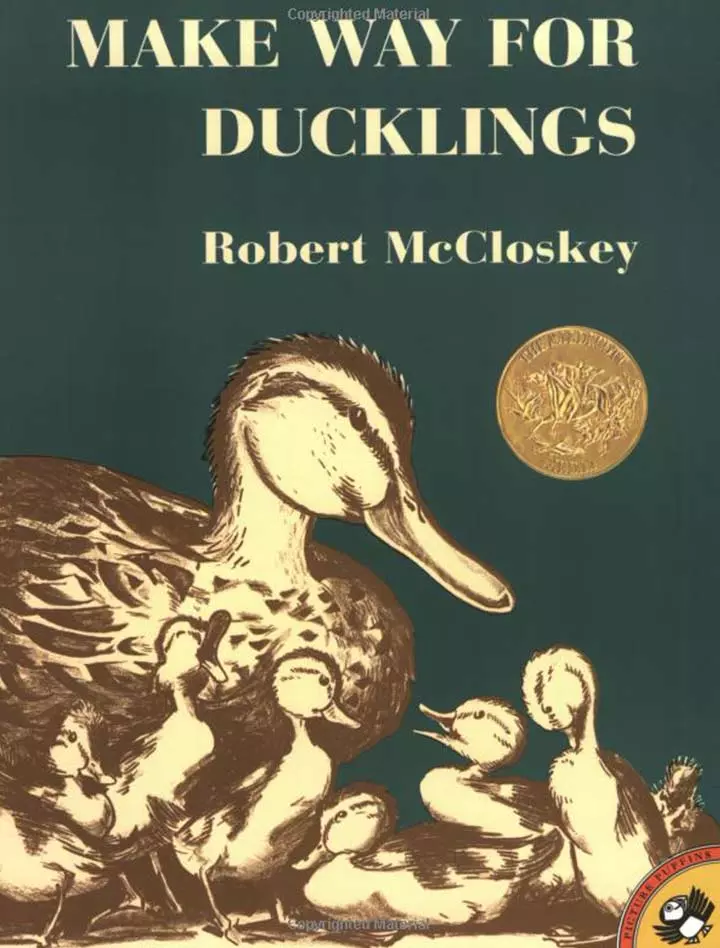
The eight Mallard ducklings are going to meet their father, while Mrs. Mallard is helping them to cross the busy and dangerous Boston roads safely. They honk “Quack, Quack” on seeing the cars; tension is built up to see if they will be able to reach safely.
In this story, family, love, care, and survival are conveyed to kids.
Age: 2+
Author: Robert McCloskey
26. Best For Learning Humbleness: Olivia, The Spy

A little pig Olivia messes up too many things after claiming she knows how to do everything. While making a smoothie, she splatters the blueberries for she doesn’t know how to use the blender. She claims to do laundry, but throws her red socks and turns her family’s white shirts red.
Then she eavesdrops on her mom talking to her aunt, crying where Olivia could be sent until some “sense” dawns upon her. She becomes curious and goes about investigating – hiding everywhere and listening to her mom speaking to her dad.
She hears the word “institution” and gets convinced that she’s going to prison. But it was just ballet, and Olivia does another mishap. She enters through the wrong door and lands onstage when the dance is ongoing.
It’s a funny story that depicts the harms of presumption and eavesdropping.
Age: 3+
Author: Ian Falconer
27. Corduroy
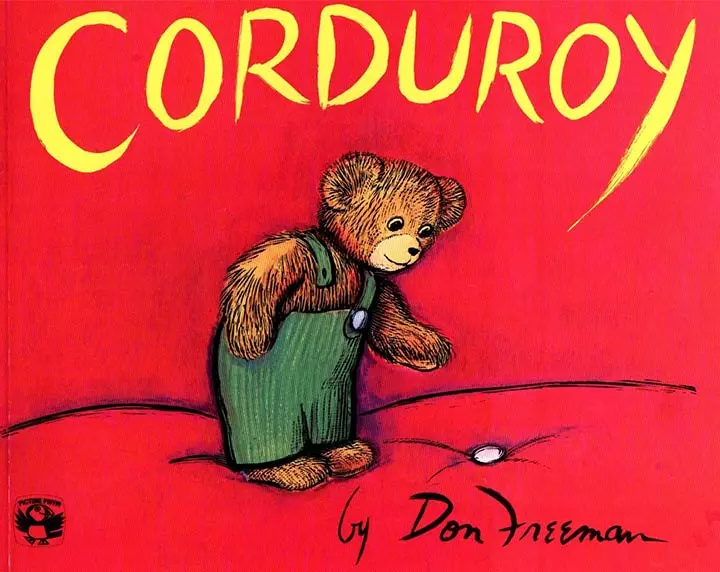
A teddy bear displayed in a department store is named Corduroy. One little girl arrives with her mother, loves Corduroy and wants to get him. The mother, however, refuses because a button is missing in his overalls.
Corduroy tries to find the missing button by himself but with no luck. He loses hope. Next day, Lisa comes back to the store with the money she saved in her piggy bank and buys Corduroy. She sews him a button at home. They hug each other, like friends who always wanted each other.
The story reflects the love children have for teddy bears and is quite relatable.
Age: 5+
Author: Don Freeman
28. The Adventures Of Pinocchio
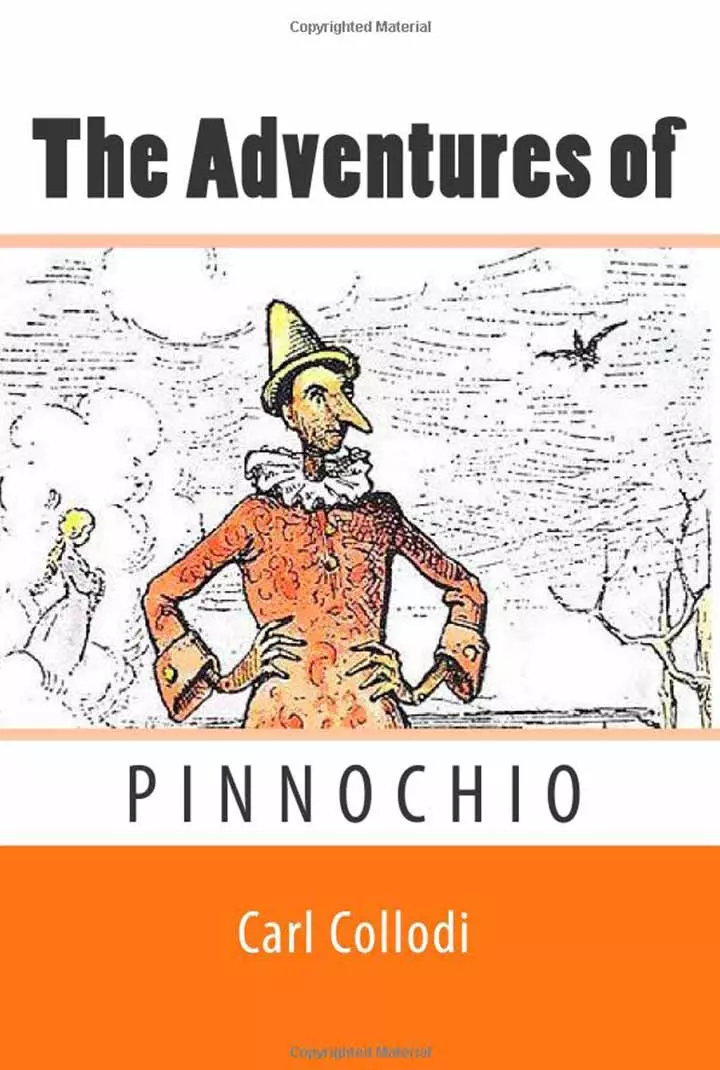
The story starts in Italy where a carpenter Master Antonio finds a pinewood block which he plans to carve as the leg for his table. When he starts, the leg shouts out. Seeing a talking log, he gives it to his neighbor, a puppeteer, named Geppetto who’s very poor.
Geppetto carves the wood into a boy and calls him Pinocchio, and a fairy puts life into the puppet. Once Geppetto teaches the puppet to walk, he runs out of the door and into the town. Soon, he gets into trouble like a real boy and remembers the broken promises and the way he treated Geppetto. He understands that to become real; he has to think of others and open up his heart.
The lovely story carries the message of being truthful and honest.
Age: 6+
Author: Carlo Collodi
29. Best For Nurturing: Miss Rumphius
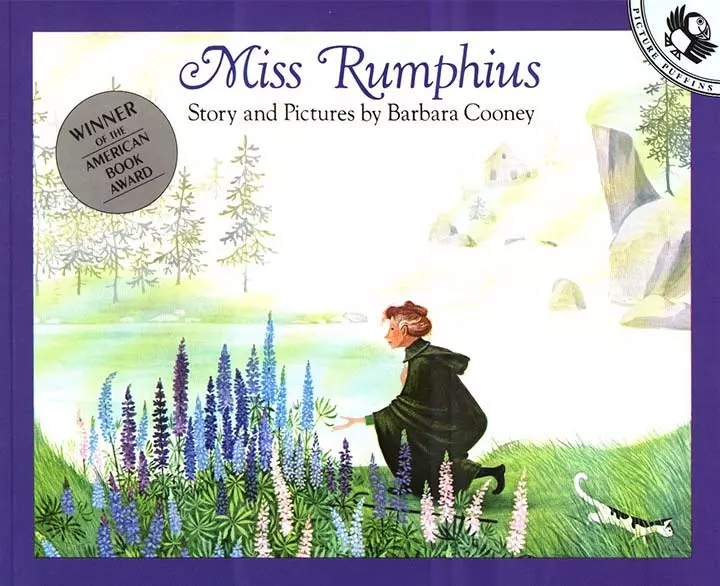
Miss Rumphius is the story of a lady Alice Rumphius, who yearned to travel and transform the world to be more beautiful. Miss Rumphius beautifies the world for the better by spreading the tiniest seeds of lupine flowers everywhere.
The coast of Maine is now filled with blossoms and Miss Rumphius is also known as the Lupine Lady.
The story conveys the message of the importance of nurturing and keeping the world beautiful.
Age: 5+
Author: Barbara Cooney
30. Best For Imagnation: Harold And The Purple Crayon
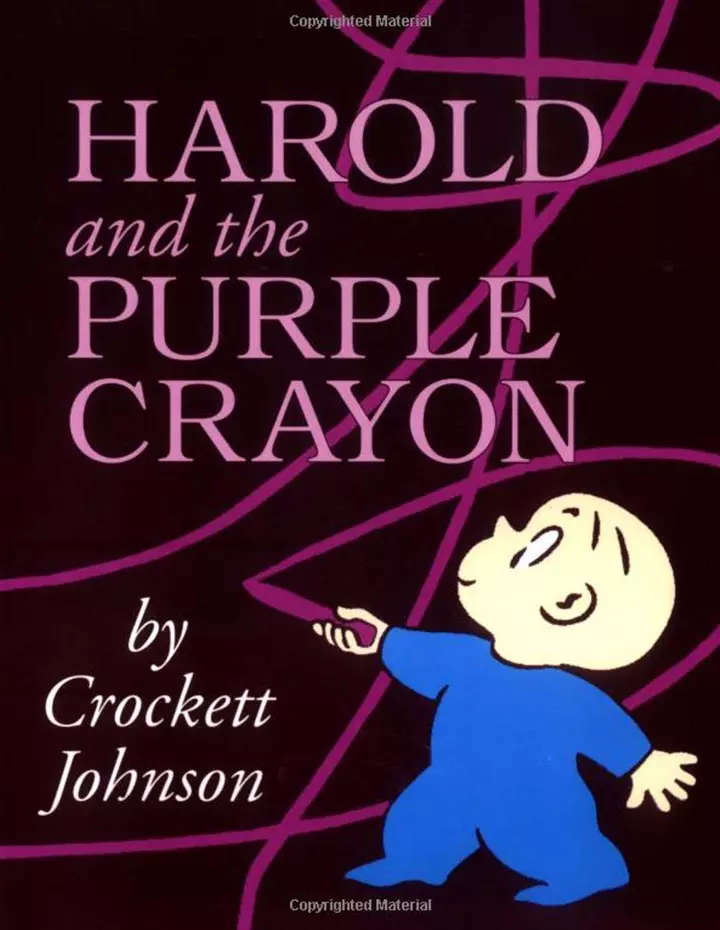
A little boy called Harold loves his purple crayon and keeps it always. One moonlit night, he decides to go for a walk but sees there’s no moon. So he draws a half moon and a path so that he doesn’t get lost. He draws an apple tree, and also a dragon for guarding it… he keeps drawing situations as per his imagination.
He draws a window around the moon, his bed, a cover, and curls up to sleep. Having done so, he drops the chalk and sleeps.
Read this story to your toddler during their sleepy time and let them have a sound sleep all night.
Age: 2+
Author: Crockett Johnson
How To Choose The Right Children’s Books To Read With Your Kids?
Consider the following factors when choosing the best children’s books.
- Engaging: Choose books with engaging storylines and exciting characters that motivate your child to continue reading and inspire them to think creatively and develop their skills.
, an experienced English teacher and reading specialist, says, “Ask your child what they’re picturing in their mind as you’re reading a book to them. This method can help them make connections from the book to the fantasy worlds they are reading about and has proven to increase reading retention and comprehension.”
- Illustration: Select books with bright illustrations to draw the child in. Beautiful pictures combined with a fun story can help your child understand the story easily while having fun.
- Age: Check the recommended age range to ensure the book is appropriate for your child. The right book should have suitable language and content that can challenge your child’s vocabulary and imagination and nurture them. If the book is very complex, the child may lose interest.
- Reviews: Check the reviews left by other parents to determine if a book is suitable for your child.
Frequently Asked Questions
1. When should children start reading chapter books?
You may introduce chapter books to children at the age of seven. These books are generally written for children aged seven to ten years. The books are short and introduce children to prose. They also contain vibrant illustrations to attract their attention.
2. At what age should children start reading books?
Children usually start exploring books independently at the age of three. So, this is a good age to give them their first book and let them start reading (1).
3. What are the benefits of reading books for children?
Reading age-appropriate books can help children with vocabulary, language skills, healthy behaviors, emotions, empathy, imagination, creativity, and self-confidence (2).
It is good to introduce the concept of reading to children when they are young as it becomes easier to develop the habit of reading regularly. Books teach children various values, and thus, knowledge gained from reading can’t be compared to what is learned in schools. Our list of the best storybooks for kids includes stories with diverse themes such as playful animals, tales from the past, and life lessons. Therefore, keep your child engaged and bond with them over new stories and characters.
Why Trust MomJunction?
Wedetso Chirhah writes extensively on books, kids, and more and has experience editing school books for children. He brings you this list of the best books to help you teach your child about responsibility, love, friendship, and compassion towards animals. Most of these books are easy to read and make great options for reading before bed.
The Bottom Line
It is good to introduce the concept of reading to children when they are young as it becomes easier to develop the habit of reading regularly. Books teach children various values; thus, knowledge gained from reading can’t be compared to what is learned in schools. Our list of the best storybooks for kids includes books with engaging illustrations and colorful collages like The Very Hungry Caterpillar, life lesson-teaching tales like Charlotte’s Web, and engaging books with playful animal protagonists like The Cat In The Hat. Therefore, keep your child engaged and bond with them over new stories and characters.
Infographic: How To Choose The Right Children’s Books?
Selecting the appropriate storybooks for children is crucial for their cognitive, social, and emotional development. The following infographic provides a list of key considerations to keep in mind when choosing a book for your child. Be sure to review these points and use them to guide your selection process. Illustration: Momjunction Design Team
References
- Reading Milestones
https://kidshealth.org/en/parents/milestones.html - Children’s literature to promote students’ global development and wellbeing
https://www.ncbi.nlm.nih.gov/pmc/articles/PMC7036210/
Community Experiences
Join the conversation and become a part of our nurturing community! Share your stories, experiences, and insights to connect with fellow parents.
Read full bio of Taylor Beal
Read full bio of Wedetso Chirhah
Read full bio of Poulami Nag
Read full bio of N Pravenchandra Singh












